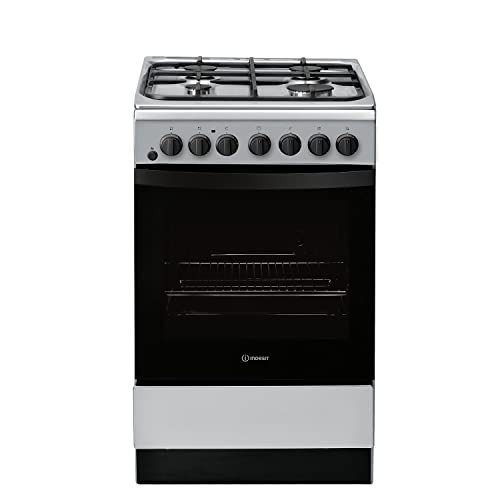Understanding Oven Hobs: The Heart of Culinary Crafting
In the world of contemporary kitchens, the oven hob sticks out as a vital home appliance. Not only is it a main part for cooking a variety of meals, however it also influences kitchen aesthetic appeals, performance, and effectiveness. This post explores the kinds of oven hobs, their features, benefits, and maintenance tips. Additionally, it resolves some often asked concerns to offer a detailed understanding of this essential kitchen appliance.
Kinds Of Oven Hobs
Oven hobs can be classified into several types based upon their energy source and design. Comprehending these variations can assist customers make notified choices when choosing the perfect hob for their kitchen requires.
1. Gas Hobs
Gas hobs use natural gas or gas as fuel, using exact temperature level control and instant heat. They are favored by numerous chefs for their ability to offer visual feedback through flame.
Pros:
- Quick heat-up time.
- Exact temperature level modifications.
- Compatible with all types of pots and pans.
Cons:
- Requires a constant gas supply.
- Security worry about open flames.
- Needs more upkeep.
2. Electric Hobs
Electric hobs are powered by electrical energy and feature smooth glass or ceramic surface areas. They typically come in 2 types: coil and strong.
Pros:
- Sleek look.
- No open flames, reducing security risks.
- Easy to clean.
Cons:
- Slower to heat up and cool down.
- May require specific pots and pans (induction).
- Some may have unequal heat distribution.
3. Induction Hobs
Induction hobs utilize electromagnetic energy to directly heat up pots and pans. Ovens & Hobs work with ferromagnetic cookware.
Pros:
- Very energy-efficient.
- Quick cooling and heating times.
- Safe, as the surface remains relatively cool.
Cons:
- Limited to specific types of cookware.
- Greater preliminary expense.
- Can produce noise when in usage.
4. Strong Plate Hobs
These electric hobs feature strong metal plates that warm up and keep heat for cooking.
Pros:
- Durable and trusted.
- Simple operation.
Cons:
- Takes time to warm up.
- Less effective than induction and gas designs.
| Hob Type | Heat Source | Visual appeals | Maintenance |
|---|---|---|---|
| Gas Hobs | Gas | Traditional | Moderate |
| Electric Hobs | Electricity | Modern/Sleek | Low |
| Induction Hobs | Electromagnetic | Contemporary | Low |
| Solid Plate Hobs | Electrical power | Classic | Typical |
Functions to Consider When Choosing an Oven Hob
When picking the ideal oven hob for your kitchen, there are a number of necessary features to take into consideration. These include:
- Size: Ensure the hob fits the designated space in your kitchen.
- Variety of Burners: Consider your cooking style and how numerous burners you'll need.
- Control Type: Look for easy to use controls, whether touch-sensitive or knobs.
- Safety Features: Many contemporary hobs include precaution like flame failure gadgets or child locks.
- Energy Efficiency: Choose energy-efficient designs to minimize energy bills and reduce your environmental impact.
Benefits of Using an Oven Hob
The oven hob supplies a number of benefits that cater to both amateur cooks and professional chefs. Here are some key advantages:
- Versatility: Whether boiling, frying, simmering, or sautéing, an oven hob accommodates different cooking strategies.
- Convenience: Many hobs come with extra functions like timers and automated shut-off systems for included benefit in busy kitchens.
- Improved Cooking Control: The immediate heat reactions of gas and induction hobs permit much better control over cooking temperatures.
- Design Enhancement: Modern hobs can boost the overall aesthetic of a kitchen, adding a contemporary touch.
Upkeep Tips for an Oven Hob
To guarantee the durability and effectiveness of an oven hob, correct upkeep is important. Here are some maintenance ideas:
Regular Cleaning:
- Use a soft cloth and moderate detergent to clean surface areas after each usage.
- For induction and ceramic hobs, prevent abrasive cleaners to prevent scratching.
Look for Wear and Tear:
- Inspect rubber seals and connections in gas hobs routinely for any damages or leaks.
- Guarantee electrical connections are safe in electric hobs.
Expert Servicing:
- Schedule regular upkeep talk to a qualified technician to prevent significant problems.
The oven hob is an essential element in any kitchen, working as a focal point for culinary undertakings. Whether choosing gas, electric, or induction, understanding the different types, features, and upkeep requirements is necessary for making a knowledgeable choice. A well-chosen hob not only improves cooking performance but likewise enhances the total kitchen experience.
Frequently Asked Questions (FAQs)
1. What type of hob is best for a newbie?
Electric hobs are typically favored by beginners due to their ease of use and upkeep.
2. Can I use all pots and pans on an induction hob?
No, induction hobs require ferromagnetic cookware for them to work effectively.
3. How do I understand if my gas hob is working efficiently?
Regularly look for even flame circulation and listen for any hissing noises that may suggest leaks. If in doubt, speak with an expert.
4. Is a greater rate always much better for hobs?
Not always. While higher-priced designs may offer advanced functions, several mid-range products offer outstanding efficiency and durability.
5. Can I set up a hob myself?
It is advisable to hire a professional, particularly for gas hobs, due to security issues and local policies.
By understanding the nuances of oven hobs, home cooks can make a well-informed choice that aligns with their culinary aspirations and kitchen designs. Selecting the best hob boosts both the cooking experience and kitchen visual appeals, making it an essential investment for any home.

